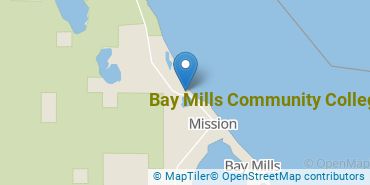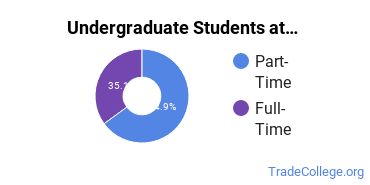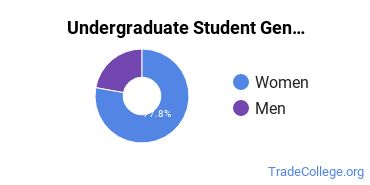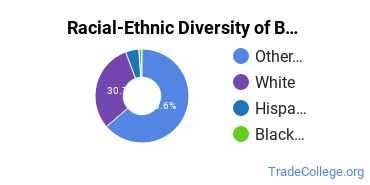Bay Mills Community College Trade Programs
Located in Brimley, Michigan, Bay Mills Community College is a public institution. The rural area surrounding the school is great for students who prefer living in a country setting.
Featured schools near , edit
Where Is Bay Mills Community College?

Contact details for BMCC are given below.
| Contact Details | |
|---|---|
| Address: | 12214 W Lakeshore Dr, Brimley, MI 49715 |
| Phone: | 906-248-3354 |
| Website: | www.bmcc.edu |
Can I Afford BMCC?
| In State | Out of State | |
|---|---|---|
| Tuition | $2,660 | $2,660 |
| Fees | $660 | $660 |
| Books and Supplies | $700 | $700 |
Bay Mills Community College Undergraduate Student Diversity

Gender Diversity
Of the 162 full-time undergraduates at BMCC, 20% are male and 80% are female.

Racial-Ethnic Diversity
The racial-ethnic breakdown of Bay Mills Community College students is as follows.

| Race/Ethnicity | Number of Grads |
|---|---|
| Asian | 0 |
| Black or African American | 4 |
| Hispanic or Latino | 3 |
| White | 47 |
| International Students | 0 |
| Other Races/Ethnicities | 108 |
Bay Mills Community College Trade School Concentrations
The table below shows the number of awards for each concentration.
| Major | Basic Certificate | Associate’s | Undergraduate Certificate | TOTAL |
|---|---|---|---|---|
| General Health & Wellness | 0 | 4 | 3 | 7 |
| Medical Insurance Coding Specialist/Coder | 5 | 0 | 0 | 5 |
| General Construction Trades | 0 | 3 | 1 | 4 |
| Emergency Medical Technology/Technician (EMT Paramedic) | 3 | 0 | 0 | 3 |
| Medical Administrative/Executive Assistant & Medical Secretary | 0 | 0 | 1 | 1 |
| TOTAL | 8 | 7 | 5 | 20 |
References
*The racial-ethnic minorities count is calculated by taking the total number of students and subtracting white students, international students, and students whose race/ethnicity was unknown. This number is then divided by the total number of students at the school to obtain the racial-ethnic minorities percentage.
More about our data sources and methodologies.
Featured Schools
 Request Info
Request Info
|
Southern New Hampshire University You have goals. Southern New Hampshire University can help you get there. Whether you need a bachelor's degree to get into a career or want a master's degree to move up in your current career, SNHU has an online program for you. Find your degree from over 200 online programs. Learn More > |
